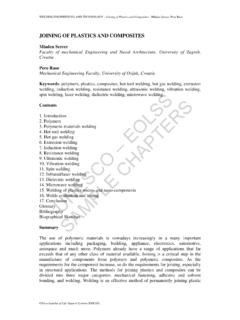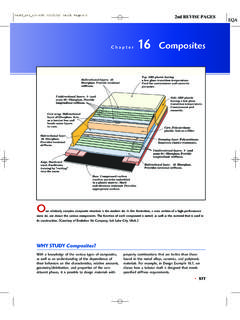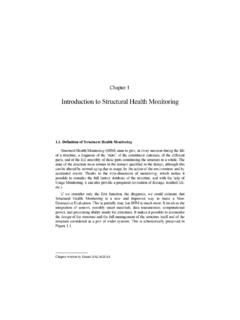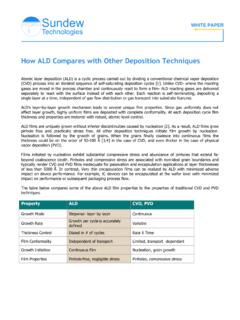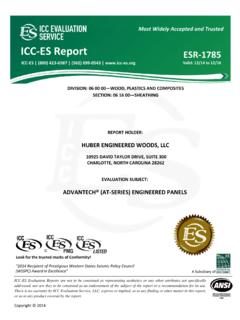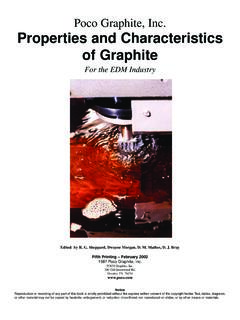Transcription of INTERACTIVE ARCHICAD PRACTICE MANUAL - …
1 INTERACTIVE ARCHICAD . PRACTICE MANUAL . 1st Edition Vaneshrie Sullivan ii USER'S NOTICE. This book copyright December 2011 - Vaneshrie Sullivan All rights reserved worldwide. All copyright and other intellectual property rights in this book, templates and example files available on the Website, its contents (including but not limited to software, photos, text, graphics, ideas, drawings, and notes) are vested in Vaneshrie Sullivan Ltd. Projects used for reference have been obtained with express permission from the owners. You may not copy, reproduce, publish, sell, rent, transmit or distribute, or otherwise use any of the contents of this book or associated information received off the Website without prior permission of Vaneshrie Sullivan Ltd. The author's moral rights have been asserted. Please note that much of this publication is based on personal experience and anecdotal evidence. Although the author and publisher have made every reasonable attempt to achieve complete accuracy of the content in this MANUAL , they assume no responsibility for errors or omissions.
2 Also, you should use this information as you see fit, and at your own risk. Your particular situation may not be exactly suited to the examples illustrated here, and you should adjust your use of the information and recommendations accordingly. Any trademarks, service marks, product names, corporate names or named features are assumed to be the property of their respective owners, and are used only for reference, without intent to infringe. There is no implied endorsement if one of these terms have been used within the MANUAL . iii CONTENTS. FOREWORD VIII. ENDORSEMENT IX. ABOUT THE AUTHOR X. NOTE TO THE READER XIII. PREFACE XIIV. 1 INTRODUCTION 1. 2 CORE TRAINING COMPONENTS 3. FOR GENERIC ROLES WITHIN A. PRACTICE . 3 CONTENTS OF THE TEMPLATE FILE 7. AND EXAMPLE PROJECTS. 4 FOLDERS AND FILING SYSTEM 21. ARCHICAD ADD-ONS 22. ARCHICAD HOTFIXES 22. ARCHICAD PROJECTS 23. ARCHIVE. ARCHICAD PROTOCOL 24. ARCHICAD TRAINING 25. LIBRARIES 25.
3 USER PREFERENCES 27. ADMIN 27. 5 SOLO PROJECTS AND TEAMWORK 29. PROJECT SETUP. SMALL PROJECTS 29. MEDIUM PROJECTS 29. LARGER PROJECTS 29. LARGER PROJECTS WITH 30. MULTIPLE BUILDINGS. 6 PROJECT FOLDER STRUCTURE 31. 7 NAMING A DRAWING 35. 8 SETTING UP AN OFFICE TEMPLATE 39. PURPOSE 39. EXPLANATION OF 40. TEMPLATESAVAILABLE FOR. DOWNLOAD. iv 9 ARCHICAD INTERFACE AND USER 53. PREFERENCES. 10 TITLE BLOCK INFORMATION 59. 11 HANDLING REVISIONS OF FILES 63. AND DRAWINGS. REVISIONS OF FILES 63. REVISIONS OF DRAWINGS 64. WITHIN A FILE. 12 ARCHIVING 67. ARCHIVING PROCESS FOR 67. ELECTRONIC DRAWINGS (2D). ARCHIVE FOLDER 69. STRUCTURE. ARCHIVING PROCESS FOR 69. ELECTRONIC DRAWINGS. (MODELS). 13 WORKING AT VARIOUS SCALES ON 73. ARCHICAD . 14 DETAILS 77. CREATING A LIBRARY OF 78. DETAILS. CREATING SCALE SENSITIVE 81. DETAILS. 15 CREATING AN OFFICE STANDARD 87. FOR LIBRARIES. 16 SETTING UP A FILE FOR 91. COLLABORATION OR INTER- OFFICE PROJECT PROTOCOL.
4 GENERAL 91. LAYERS 91. COLLABORATION WITH 92. ARCHITECTS NOT. NECESSARILY ON ARCHICAD . IN COLLABORATION WITH 92. OTHER PROJECT ROLES. 17 OPENING OF DWG FILES 93. 18 IMPORTING A DWG IN THE 95. CORRECT SCALE FOR PRINTING. v 19 CREATING A STANDARD OFFICE 99. TEMPLATE FOR ONE-OFF OPENING. OF DWG FILES. 20 CREATING A 3D SITE FROM A 2D 101. SURVEY. 21 CONVERTING MULTIPLE MESHES 111. INTO ONE. 22 SUGGESTED METHODS OF 115. IMPORTING A DWG. IMPORTING A DWG FILE TO 117. CHECK DRAWINGS. IMPORTING A DWG FILE TO 122. USE AS AN OS MAP. IMPORTING A DWG FILE FOR 125. A SITE SURVEY OR. REFURBISHMENT. IMPORTING A DWG FILE TO 127. CREATE LIBRARY PARTS IN. ARCHICAD . IMPORTING DWG BLOCKS AS 128. LIBRARY PARTS. IMPORTING A 2D DRAWING 130. AS A LIBRARY PART. 23 SETTING UP PUBLISHING FOLDERS 133. FOR EXPORTING FILES TO. CONSULTANTS. 24 COMPOSITES 137. BEGINNING A DRAWING 137. AND COMPOSITES. GETTING COMPOSITE WALLS 144. TO TRIM PROPERLY. WORKING WITH COMPOSITE 150.
5 WALLS IN HOTLINK. MODULES. 25 SETTING UP THE PROJECT AND 153. FAVORITES. 26 BEGINNING A NEW DRAWING 161. vi NAMING STOREYS, VIEWS 162. AND DETAILS. CREATING STOREYS 167. THE WORK ENVIRONMENT 168. AND ORGANISER PALETTE. THE DRAWING 170. DIMENSIONING 172. CREATING A ROOF PLAN 180. WORKING IN MODELSPACE 186. CREATING LAYOUTS 187. 27 BEGINNING A PLANNING 189. DRAWING. LAYER PRIORITIES 190. 28 BEGINNING A PROJECT AT THE 195. CONSTRUCTION PHASE. VIEW SETTINGS AND 195. STORING OPTIONS. 29 BEGINNING AN INTERIOR PACKAGE 201. 30 BEGINNING A DRAWING FROM A 203. 2D DWG IMPORT. USING THE ROTATE 206. ORIENTATION AND SAVING. ZOOM OPTIONS. NUMBERING EXISTING 208. DOORS AND WINDOWS. 31 BRINGING IN PDF FILES INTO A 211. DRAWING. 32 PREPARING SITE PLANS 213. 33 SETTING UP A FILE FOR A MASTER 215. PLANNING DOCUMENT. 34 ACKNOWLEDGEMENTS 219. 35 INDEX 221. viii FOREWORD. Vaneshrie first joined ADAM Architecture in 2005 when we assisted her to re- locate to the UK from South Africa.
6 After a period during which time Vaneshrie pursued other career interests, we were pleased that she re-joined the PRACTICE in 2010 as a consultant CAD/BIM Manager. Her extensive knowledge of ARCHICAD and her ability to train staff are an asset to our PRACTICE . We selected ARCHICAD as the technical package for the PRACTICE because of its intelligent and parametric tools, thus avoiding the need to redraw for different scales and reducing the time to make amendments. We saw the benefit of these standards, albeit in earlier versions of the software, when Vaneshrie first set up two projects for our office. Vaneshrie's management of ARCHICAD and the BIM server, together with her advice on setting up projects, ongoing staff training and technical support for the PRACTICE have proven extremely valuable. At ADAM Architecture, we are proud to produce creative 2D hand drawings, and have managed to combine this with CAD with successful results.
7 Vaneshrie is very ambitious and goal orientated; the ideal attributes to put together this INTERACTIVE ARCHICAD PRACTICE MANUAL . The practical advice offered in this book will help architects, CAD technicians and job runners using ARCHICAD to find the most efficient way of working. For us the book will be a useful tool for staff in our offices and we are very pleased to have been able to support Vaneshrie during the production of this book. Robert Adam Nigel Anderson Paul Hanvey Hugh Petter George Saumarez Smith Directors of ADAM Architecture ix ENDORSEMENT. If you can accept that life is a journey, you may either find yourself focused on the preparations for the journey, in the hope that it would improve the journey, or you may find yourself focused on the best measuring tool to rate the quality of the destination. As I have never met anyone who has arrived at the destination and lived to tell the tale, I tend to focus on the preparations to improve the journey itself.
8 Mastering ARCHICAD is a Our author has filtered her decade long ARCHICAD journey, found the pearls of wisdom' from every forward step she has taken, and laid these out in a beautifully meandering, guided trail, for all to follow, who wish to embark on their own ARCHICAD Andre' Strauss Perpetual ARCHICAD novice since 1993. Owner, GRAPHISOFTSA, TotalCAD SOLUTION CENTRE. 1. CHAPTER 1. INTRODUCTION. Many users will identify ARCHICAD as being a package that is both user- friendly and customisable. This freedom, built into the software, therefore allows every individual in a PRACTICE to use their own method of working. However, this does not come without a price, and in a small or large PRACTICE , could introduce problems if there is no basic Office PRACTICE Guidelines. Architectural practices are creative and individual, and have their own ideas of preparing and presenting their work in the early stages of Sketch/Planning. However, at whichever stage a Project gets introduced into ARCHICAD , there needs to be a standard that allows efficiency and longevity.
9 There are those who prefer presenting their files in computer rendered formats, either as video files or CGIs, using ARCHICAD and assisted with additional rendering software. There are other Architects who prefer hand-drawn perspectives, and hand- drawn plans and elevations, in the Presentation/Sketch Plan phase, then move on to CAD once a Project is approved at the Sketch phase. There are others, comfortable with both of these platforms, using the strengths of CAD and the talent of individual Architects to provide a balance between the creative side that Architecture is, and the fast efficient and continuously changing Work Environment that CAD allows. IF YOU FEEL GOOD, YOU WILL PROBABLY DO YOUR BEST EVEN. IF YOUR BEST DOES NOT JUSTIFY YOU FEELING GOOD! -- JOHN. WATSON. 2. My aim is to recommend a balance, to use all of the strengths within an office, so that at Sketch Plan phase, if you do start off with a 3D perspective or hand-drawn elevation, the processes that you should follow in CAD so that, when the sketch is approved, very little time is used in taking the Project forward to the Building Regulation and Construction Drawing phase.
10 The aim of well set out drawings will ensure that problems within the building can be easily detected at an early stage and rectified before a Project is on site. When drawings are prepared at the Planning or Sketch Plan phase, they may have discrepancies that expect to be resolved when reaching the Construction Drawing phase. The danger in this approach is that, many a time, what is proposed in the Planning/Sketch phase is not what is finally built on site. Preparing a Building Information Model from the start, using the tips in the sections that follow, address these issues, and provide a quicker turn-around time. The INTERACTIVE ARCHICAD PRACTICE MANUAL also aims to standardise methods of filing within the office, so that drawings can be easily found. Once Projects are set up with the recommendations provided in this PRACTICE MANUAL , it is important that Projects are monitored regularly, and any anomalies cleared up before Projects cross over from one stage to another.
